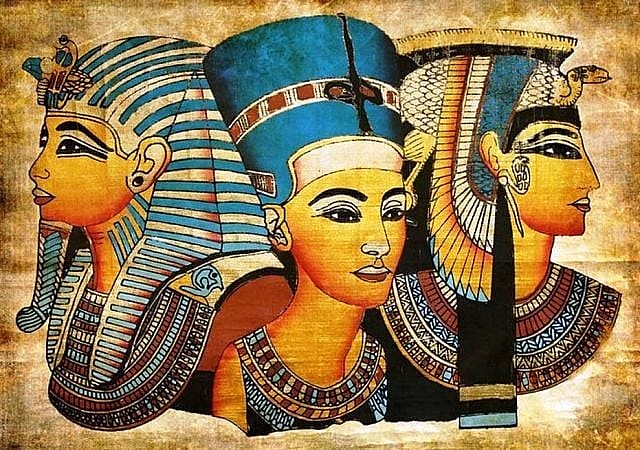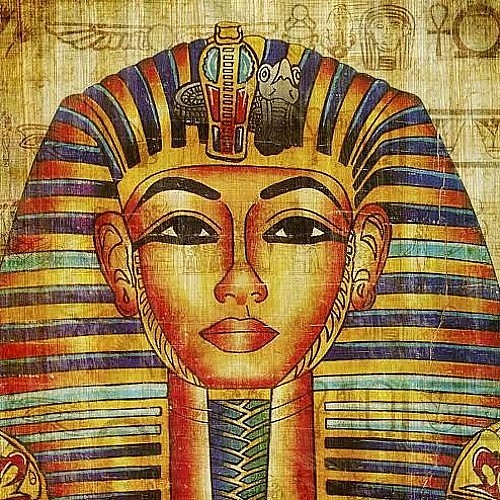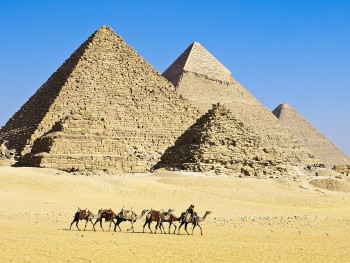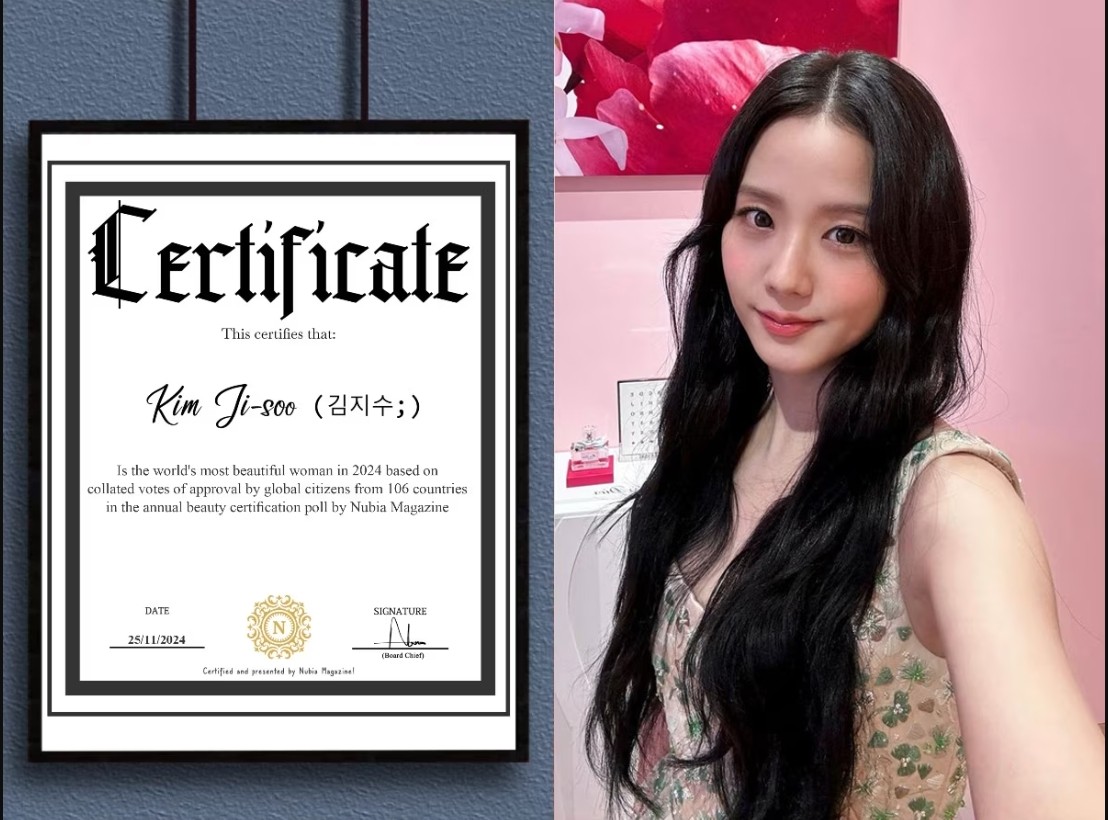Top 3 Most Beautiful Pharaohs In Ancient Egypt's History
♦ Solved Mystery: How Egyptians Moved Tons Of Rocks To Build Pyramids
♦ Top 10 Largest & Wonderful Pyramids In The World
 |
| Most Beautiful Female Pharaohs In Ancient Egypt's History - Photo starunfolded |
| Contents |
In the ancient Egypt period (about 3,000 years ago) in which women could hardly hold power, queens like Cleopatra VII and Nefertiti were exceptions. They became extremely powerful in the pyramid land.
The female rulers of Egypt were a powerful force on their own right, even as wives to the Pharaohs, with their own enduring legacies; some of them have even ruled without a man by their side. Check out top 3 most beautiful queens of ancient Egypt.
Who Are The Most Beautiful Female Pharaohs In Ancient Egypt's History
1. Nefertiti (1370-1330 BC): The queen who represents the power of successful women
Queen Nefertiti was the wife of Akhenaten (formally known as Amenhotep IV) who came to the throne in 1352 BC and reigned for 17 years.
Nefertiti: The queen who represents the power of successful women: This is the opinion of Professor Karra Cooney. Nefertiti (1370 BC -1330 BC) is the most mysterious of the six Egyptian queens. Egyptologists have discovered very little information about her.
So far, we've only seemed to argue about Nefertiti as a beauty, as evidenced by the bust showing the astonishing beauty of a queen thousands of years ago.
However, upon becoming a political leader, Nefertiti changed her identity. She changed her name herself, and records of this queen are no longer depicted in a feminine way.
READ MORE: Watch Video 'Lost City' in Egypt: 3,000-Year-Old and Largest Ancient City
| Where did she come from? Nobody can say for sure where she came from. She was the wife of Pharaoh Akhenaten, giving birth to six daughters for him, and a central figure in his cult of Aten, which revered the sun as a divine being and rejected all other religions. Scholars have speculated that Nefertiti may have been worshiped as a fertility goddess in addition to being admired for her beauty. |
 |
| Queen Nefertiti - Photo Hindustan Time |
Cooney said Nefertiti is the most successful of the female leaders mentioned. She was the one who handled the mess that the men before her made.
Queen Nefertiti didn't care about her own ambitions and didn't even claim it in the way that historians might convey about the queen in power. Queen Nefertiti hid all evidence that she was in power.
Today, Egyptologists still debate to whether Queen Nefertiti would become the co-ruler or sole ruler of ancient Egypt. The power of this beautiful woman is still a big mystery to researchers.
Nefertiti's SculptorDuring her husband's reign, Akhetaten was the capital city of Egypt, and it was there that the famous bust of this beautiful queen (from which the white bust in the photo above was modeled) was discovered in the studio of the sculptor Thutmose. The German-Orient-Association made the discovery in 1912, and the National Museum of Berlin now proudly displays this prized artifact. (Although Egypt is persistent in trying to regain possession of this item.) |
Why is the sculpture of Queen Nefertiti so special?Bust sculptures, which only show the head and shoulders, were very rare in this time period, which is what makes this 50 cm tall sculpture so special. Because of this, some experts think that this piece was just a 3-D sketch that the artist used to make other paintings, carvings, or full-body sculptures of the beautiful queen. (It's funny that what may have started as a simple "sketch" by an artist has become one of the most copied pieces of ancient Egyptian art.) The colors used to paint the piece, the fact that her features are perfectly symmetrical, and the fact that the bust was found in almost perfect condition all made this an amazing find for archeologists. Whether or not her beauty was exaggerated can never be proven for sure, but writings by her subjects calling her "Fair of Face" and "Endowed with Love" support the artist's vision. |
2. Cleopatra VII (r. 51-12 BC): One of the most famous Egyptian female Pharaohs
 |
| Cleopatra VII - Photo: soundcloud |
Cleopatra VII is famous for being an intelligent and eloquent queen. She conquered and made both talented Roman generals fall in love with her.
Cleopatra VII (69 BC - 30 BC) is known as the last female pharaoh in the history of ancient Egypt, but is the most famous among other beauties on the political arena.
According to Professor Cooney, someone who grew up in a family like Ptolemy probably had to go through post-traumatic stress. Each of Ptolemy's sons or daughters had their own entourage, their own treasures, and certain shared powers, but in a very different system of siblings. This led to the killing of each other to compete for power, while this was impunity and was common in ancient Egypt.
Cleopatra VII is perhaps the only woman in the book to have used her fertility as a man to create a legacy, Cooney said.
While other women in ancient Egypt ruled only by regent for a child or by childlessness, Cleopatra had children with two great Roman military rulers. This beautiful queen had a son with the emperor Julius Caesar and 3 children with her lover Mark Antony.
Later, Cleopatra carefully arranged for each of her children to take on a different role in the "Eastern Empire" to compete with the Roman Empire in the West.
Like many other clans in ancient Egypt, Cleopatra was a queen born into a close family. Cleopatra was not a stunningly beautiful woman and this can be partly demonstrated by the discovery of carvings on ancient coins from the period in which she ruled ancient Egypt.
Perhaps her intelligence and charismatic conversational ability is one of the characteristics that attract talented generals and politicians like Julius Caesar and Mark Antony. Cleopatra, in particular, knows how to make the most of her great advantages more than any of the powerful women.
READ MORE: Top 10 Largest & Wonderful Pyramids In The World
3. Hatshepsut (1508 BC - 1458 BC): The brave queen who reigned longer than any female pharaoh in history
Hatshepsut is considered one of the first queens to revolutionize the "game of thrones" in ancient Egypt.
After the death of her husband Thutmose II, Hatshepsut was credited with creating for the Eighteenth Dynasty of the New Kingdom a position of security, prosperity, and lasting peace before transferring power to Thutmose III. He was the pharaoh known as the "Napoleon of Egypt", who has made many expeditions to contribute to the expansion of the territory.
 |
| Hatshepsut - Photo: Hindustan Time |
During her 21-year reign, Hatshepsut was considered one of the most powerful Queens in the history of the ancient world.
According to researcher Karra Cooney, Queen Hatshepsut was courageous in the way she used ideology to establish and connect herself with unattainable power.
Hatshepsut did everything perfectly. She was really a powerful "woman" on the ancient Egyptian politics at that time.
Hatshepsut’s legacy was almost forgottenAfter Hatshepsut died, the next pharaoh, Thutmose III, and his son tried to erase all evidence of her from history books. This meant taking her name off of inscriptions and cartouches and changing the way her portraits looked. Hatshepsut's place in history has been cemented by the fact that enough of her things have been found. However, this was not an unusual thing to do in ancient Egypt, and many historians think that there may have been other female pharaohs before Hatshepsut and Sobekneferu whose names were just wiped out of history books. |
Why is the success of women like Hatshepsut so easily overlooked?Professor Cooney says that in ancient Egypt, women like Hatshepsut were more or less stand-ins in the "game of thrones." Those women who were called "weak willows" were there to make sure that the next man could join the circle of power. They went into politics during a crisis to protect the patriarchy when something unexpected happened that stopped the throne from passing from one person to the next. But the sad truth is that as soon as the system comes back, these quiet women are thrown out. In the history of ancient Egypt, there were many times when the pharaohs tried to find a way to get rid of or forget about the last king to show how powerful they were. |
Interesting facts about male and female pharaohs
Egyptian Pharaohs, both men and women, wear fake beards.
Always, they had a beard. In real life, Egyptian men shaved their beards, but pharaohs, both male and female, always wore fake beards. People thought it brought them closer to the Gods.
Both male and female Pharaohs in Egypt wear makeup.
They always used black kohl around the eyes. They did this because they thought it would make their eyes look like the eyes of the god Horus. In fact, it's hard to find a picture of an ancient Egyptian whose eyes aren't decorated.
The leader of ancient Egypt was called a "King," no matter what gender he or she was.
The word "king" was used to describe either a man or a woman who was in charge. The name "Pharaoh" did not come from Egypt, where it meant "Great house." They were called kings, not pharaohs.
They marry people in their own family
So that the family bloodline would stay pure, they said they were descended from gods, and this "divine" status had to be kept.
If you find this article interesting, you can go to The Egyptian Museum, where most of the things in this article took place. There, you can get a bigger picture and look at the smallest details.
 What is The Oldest Country: India, Egypt, San Marino or China? What is The Oldest Country: India, Egypt, San Marino or China? Which is the oldest country in the world? It's still a debate: India, Egypt, Greece, San Marino, China or Japan are potential candidates. |
 What Is The Egypt National Anthem: English Translation, Original Lyrics And History What Is The Egypt National Anthem: English Translation, Original Lyrics And History "Bilādī, laki ḥubbī wa fuʾādī", also known by its incipit as "Bilady, Bilady, Bilady", is the national anthem of Egypt. If you want to learn ... |
 Solved Mystery: How Egyptians Moved Tons Of Rocks To Build Pyramids Solved Mystery: How Egyptians Moved Tons Of Rocks To Build Pyramids Ancient Egyptians who built pyramids moved huge blocks of rock on the desert by wetting the sand in front of a contraption built to pull ... |



























